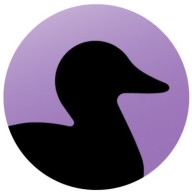

Coverity and GitGuardian Public Monitoring are key players in the code security market. GitGuardian holds an advantage due to its exceptional features, surpassing Coverity despite higher costs.
Features: Coverity offers comprehensive analytical capabilities, code quality assessments, and bug detection. GitGuardian specializes in monitoring public repositories for exposed secrets and real-time data protection, making it a formidable choice for organizations focused on security breaches.
Room for Improvement: Coverity needs improvements in processing speed, scalability, and adaptation for larger projects. GitGuardian requires more detailed reporting, enhanced analytics, and better interpretive findings. These areas highlight Coverity's scalability challenge and GitGuardian's need for deeper analytic features.
Ease of Deployment and Customer Service: Coverity provides a straightforward deployment with a supportive technical team dedicated to meeting customer needs. Similarly, GitGuardian offers an easy deployment process with proactive customer service and ongoing technical engagement, emphasizing its customer-centric focus even with higher potential overheads.
Pricing and ROI: Coverity offers attractive setup costs with significant ROI focused on code quality improvement. GitGuardian's pricing reflects its security monitoring value-added benefits, positioning it as a strategic investment with substantial long-term ROI for companies prioritizing vigilance against data exposure.


Coverity gives you the speed, ease of use, accuracy, industry standards compliance, and scalability that you need to develop high-quality, secure applications. Coverity identifies critical software quality defects and security vulnerabilities in code as it’s written, early in the development process, when it’s least costly and easiest to fix. With the Code Sight integrated development environment (IDE) plugin, developers get accurate analysis in seconds in their IDE as they code. Precise actionable remediation advice and context-specific eLearning help your developers understand how to fix their prioritized issues quickly, without having to become security experts.
Coverity seamlessly integrates automated security testing into your CI/CD pipelines and supports your existing development tools and workflows. Choose where and how to do your development: on-premises or in the cloud with the Polaris Software Integrity Platform (SaaS), a highly scalable, cloud-based application security platform. Coverity supports more than 20 languages and 200 frameworks and templates.
GitGuardian Public Monitoring allows real-time GitHub scanning and alerting to uncover sensitive company information hiding in online repositories. It monitors both organization repositories and developers' personal repositories. The solution gives visibility to developers and security teams on this very critical blindspot that are the organization developers' personal repositories on GitHub (80% of leaked corporate secrets on public GitHub come from developers’ personal repositories).
GitGuardian Public Monitoring is particularly interesting for companies with large development teams (above 200 developers) and modern development practices.
GitGuardian Public Monitoring cover 350+ API providers, database connection strings, private keys, certificates, usernames and passwords and intellectual property. It uses sophisticated pattern matching techniques to detect credentials that cannot be strictly defined with a distinctive pattern (like unprefixed credentials). The algorithm has a high precision (91% “true positive” feedback following our alerts, as reported by our users.)
The alerting is done in real-time (a few seconds after the secret was publicly exposed) which allows fast remediation involving in a collaborative way developers, security teams and operations.
GitGuardian Public Monitoring also allows red teams and pentesters to proactively look for sensitive information by performing complex queries on 12 billion documents and metadata from more than 3 years of GitHub history.
GitGuardian Public Monitoring scans public GitHub activity in real-time, helping organizations detect sensitive information leaks in source code repositories. Our solution gives Threat Intelligence and Security teams full visibility over their organization’s public GitHub Attack Surface, by monitoring both organization-owned repositories and developers' personal repositories.
With 80% of secrets and credentials leaks on public GitHub finding their source in developers' personal repositories, GitGuardian for Public Monitoring helps organizations address a critical security blind spot.
With real-time incident notification, Threat Intelligence and Security teams are guaranteed to reach the incident scene before everyone else and take action to mitigate the threat of breaches and intrusions.
We monitor all Static Application Security Testing (SAST) reviews to prevent fraudulent reviews and keep review quality high. We do not post reviews by company employees or direct competitors. We validate each review for authenticity via cross-reference with LinkedIn, and personal follow-up with the reviewer when necessary.